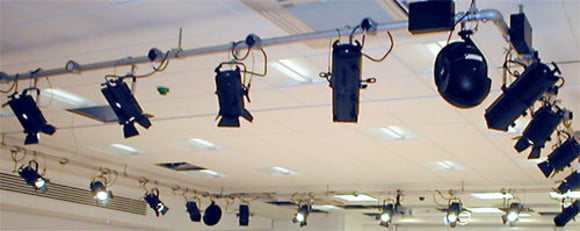4. Installation & Care
The installation of effect lighting is generally fairly simple, however when positioning the fixture, consideration should be given to where its beam output will be directed, and care should be taken over the hanging angle of the effect light. Some fixtures are designed to hang only within a specific range of angles, usually due to technical restraints of their lamp type. Angular requirements can usually be found in the user manual. Centrepieces should obviously be positioned in a central location, with other effects generally hung in symmetry around them. Youll need to experiment at first with the positioning of your fixtures, but in time, hanging lights will become second nature.
Any regulations that govern overhead installations should be researched and strictly adhered to, especially when members of the public are free to roam directly beneath. Attention should also be paid to allowing sufficient ventilation and unrestricted airflow around fixtures. Effects lights using high powered light sources can get extremely hot, so flammable materials should be kept well away. Since most effects lights come fitted with a standard plug, electrical installation is relatively simple so long as a suitable power outlet is available nearby. However, the advice of a qualified electrician should be sought if you are under any doubt about the electrical requirements of the fixture or lighting system as a whole - difficulties often arise when multi-fixture systems are rigged in a venue with an insufficient power supply.

After installation, special attention should be paid to the maintenance and care of the fixture - this will help sustain its performance and ensure a long life. Regular cleaning is important - start by removing the dust which can build up on the filters covering the cooling fans, then clean any mirrors and lenses with a suitable glass cleaner and a soft cloth. Removing dust will maintain the fixtures internal air flow - essential as overheating will damage the lamp and reduce its working life. The lamp, especially if its a discharge source should be replaced when the average operating hours are reached, irrespective of whether or not it has blown, and must only be replaced with the correct type and rating. When replacing halogen lamps, care should be taken not to touch the glass envelope of the new lamp, as any moisture on the skin can severely shorten lamp life.
Because of the complex nature of effects lights and their internal components, any major repairs should be carried out only by the manufacturer or a competent engineer.



